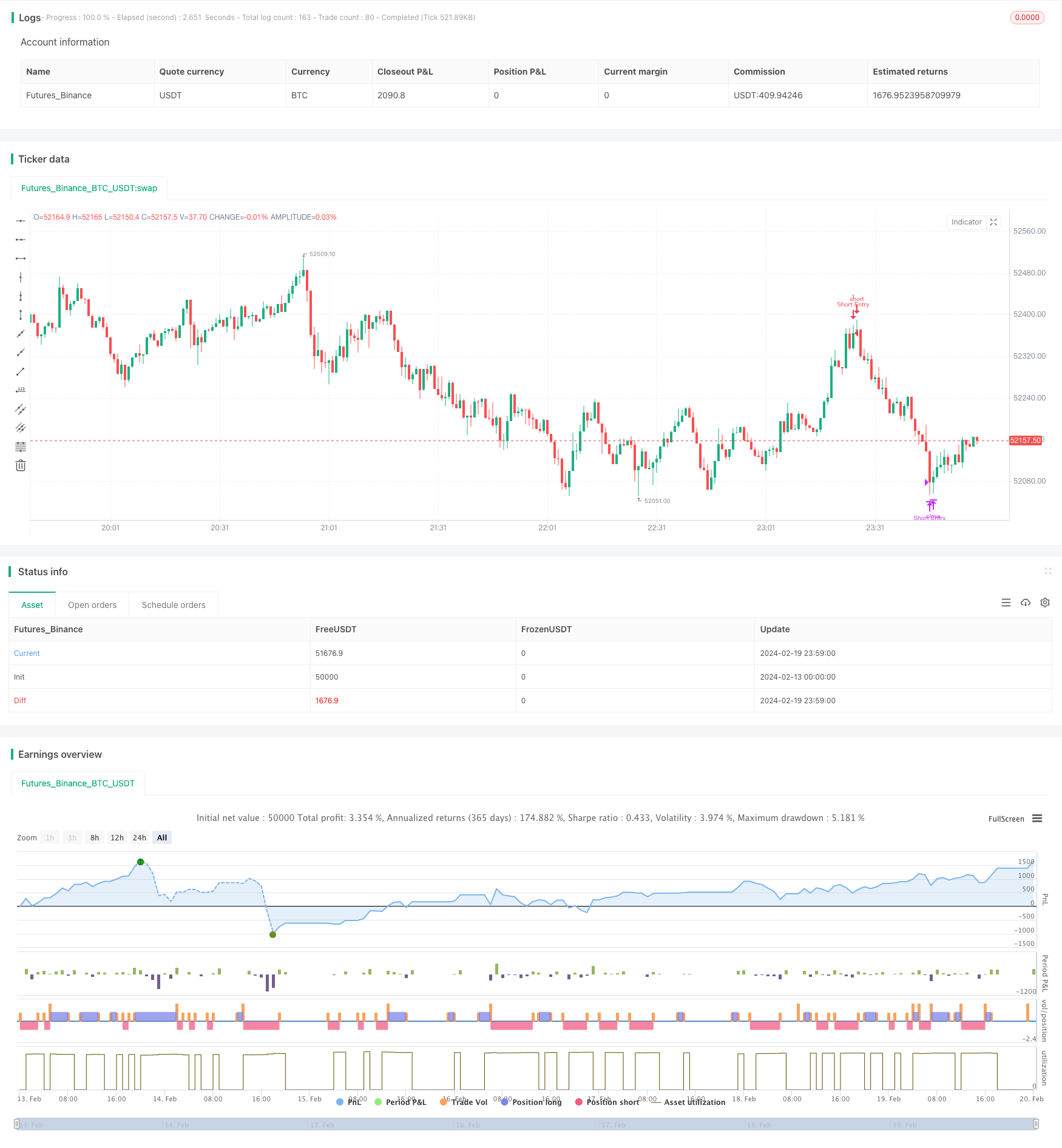
概述
相对强弱指数发散策略是一种利用相对强弱指数(RSI)识别潜在价格反转机会的策略。该策略通过发现价格走势和RSI走势之间的背离来判断力量的减弱和潜在反转。
当价格走至新低但RSI并未走至新低时,就是多头背离,表示下跌动力在减弱,可能出现向上反转。当价格走至新高但RSI并未走至新高时,就是空头背离,提示上涨动力减弱,可能出现向下反转。
该策略将RSI的超买超卖水平与背离判定相结合,以优化入场和出场时机,捕捉市场反转,提高交易准确性和盈利能力。适用于各类交易品种,是交易者在市场波动中低吸高抛的有效工具。
策略原理
相对强弱指数发散策略基于以下几个关键判断:
计算RSI值:通过计算一定周期内的平均涨幅和平均跌幅,得到0-100区间的RSI指标。
判断超买超卖:当RSI上穿设定的超买线(如70)为超买;当RSI下穿设定的超卖区间(如30)为超卖。
识别背离:判断最新价格走势与RSI走势是否一致。如果价格创新高(低)而RSI没有,就是背离现象。
结合进入和退出:多头背离伴随RSI超卖区间出现时为做多信号。空头背离伴RSI超买现象为做空信号。
设置止盈止损:RSI重新进入超买超卖区间时平仓止盈。
通过比较价格波动与RSI变化判断市场力量,策略可以在反转前低吸高抛,套利市场的不合理波动。
策略优势
相对强弱指数发散策略具有以下优势:
捕捉市场反转:策略擅长发现价格和RSI之间的背离,判断市场力量衰竭,捕捉反转机会。
配合超买超卖:结合RSI指标本身的超买超卖水平,有助于进一步优化入场和出场点位。
策略简单易行:相对简单的逻辑和参数设置,易于理解和实施。
通用性强:适用于差价合约、数字货币和股票等不同品种,使用广泛。
提高盈利:相对机械化的系统策略,回撤可控,助力打造长期稳定收益。
策略风险
相对强弱指数发散策略也存在以下风险:
错误信号风险:价格和RSI之间的背离不一定会持续或者反转成功,存在错误信号。
参数优化难:RSI参数、超买超卖线等设置对结果有很大影响,需要不断测试优化。
市场异常风险:在市场出现异常波动或者策略普遍滥用时,会失败。
技术指标滞后:RSI等技术指标总体上属于滞后的,无法准确判定反转点。
通过严格的风控,调整参数设置,结合其他因素分析,可以在一定程度上降低风险。
策略优化方向
相对强弱指数发散策略还可以从以下方面进行优化:
优化RSI参数:调整RSI计算周期,测试不同天数参数的实际效果。
结合其他指标:与MACD,KD等其他技术指标结合使用,形成交叉验证。
增加止损方式:除了原有的止盈之外,设置移动止损或振荡止损。
适应更多品种:进行针对不同交易品种的参数调整,扩大适用范围。
利用深度学习:使用RNN等深度学习模型对RSI背离进行判断,减少错误信号。
总结
相对强弱指数发散策略通过比较价格变动和RSI变化判断市场中反转机会。策略简单清晰,通用性强,能有效捕捉短期反转,获取超额收益。但也存在一定程度作用有限的风险,需要持续优化测试以适应市场。
/*backtest
start: 2024-02-13 00:00:00
end: 2024-02-20 00:00:00
period: 1m
basePeriod: 1m
exchanges: [{"eid":"Futures_Binance","currency":"BTC_USDT"}]
*/
//@version=5
strategy("RSI Divergence Strategy", overlay=true)
// RSI Parameters
rsiLength = input(14, "RSI Length")
overboughtLevel = input(70, "Overbought Level")
oversoldLevel = input(30, "Oversold Level")
rsiValue = ta.rsi(close, rsiLength)
// Divergence detection
priceLow = ta.lowest(low, rsiLength)
priceHigh = ta.highest(high, rsiLength)
rsiLow = ta.lowest(rsiValue, rsiLength)
rsiHigh = ta.highest(rsiValue, rsiLength)
bullishDivergence = low < priceLow[1] and rsiValue > rsiLow[1]
bearishDivergence = high > priceHigh[1] and rsiValue < rsiHigh[1]
// Strategy Conditions
longEntry = bullishDivergence and rsiValue < oversoldLevel
longExit = rsiValue > overboughtLevel
shortEntry = bearishDivergence and rsiValue > overboughtLevel
shortExit = rsiValue < oversoldLevel
// ENTER_LONG Condition
if (longEntry)
strategy.entry("Long Entry", strategy.long)
// EXIT_LONG Condition
if (longExit)
strategy.close("Long Entry")
// ENTER_SHORT Condition
if (shortEntry)
strategy.entry("Short Entry", strategy.short)
// EXIT_SHORT Condition
if (shortExit)
strategy.close("Short Entry")